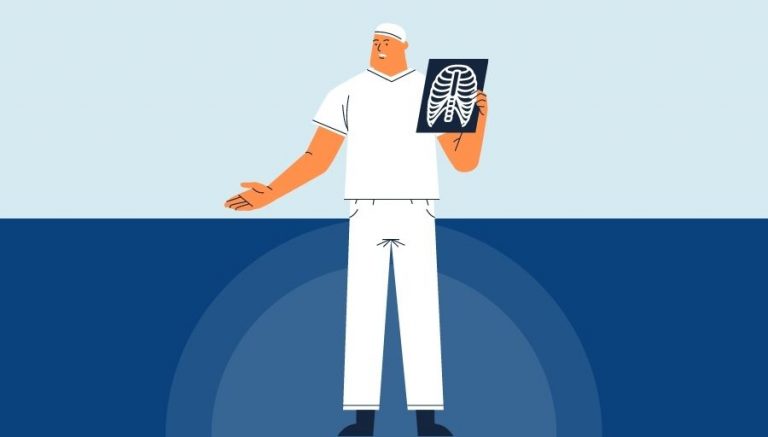How To Use CPT Code 96935
CPT 96935 describes the use of reflectance confocal microscopy (RCM) for cellular and sub-cellular imaging of the skin. This article will cover the description, procedure, qualifying circumstances, appropriate usage, documentation requirements, billing guidelines, historical information, similar codes and billing examples.
1. What is CPT Code 96935?
CPT 96935 is used to describe the imaging procedure for each additional skin lesion or area of diseased or damaged tissue using reflectance confocal microscopy (RCM). This procedure involves the provider focusing near-infrared light on the skin to detect any abnormal lesions or scar formation. The light source is connected to a computer that displays the image of the tissue under examination.
2. Official Description
The official description of CPT code 96935 is: ‘Reflectance confocal microscopy (RCM) for cellular and sub-cellular imaging of skin; image acquisition only, each additional lesion (List separately in addition to code for primary procedure).’ This code should be used in conjunction with CPT code 96932 for the examination of the single lesion.
3. Procedure
- The provider uses an imaging device to examine the cellular and subcellular layers of the skin.
- During the same session as the examination of a single lesion, the provider uses reflectance confocal microscopy (RCM) to examine each additional lesion on the skin.
- The provider focuses near-infrared light through a laser diode on the target skin, which reflects the light back in different proportions.
- The diode is connected to a computer that captures and displays the images of the skin tissue under examination.
- The provider collects the images for further analysis and interpretation.
4. Qualifying circumstances
CPT 96935 is used when the provider needs to examine each additional skin lesion or area of diseased or damaged tissue using reflectance confocal microscopy (RCM). This procedure is typically performed in conjunction with the examination of a single lesion using CPT code 96932. The provider uses near-infrared light to visualize the cellular and subcellular layers of the skin and detect abnormalities in the vasculature.
5. When to use CPT code 96935
CPT code 96935 should be used when the provider needs to perform reflectance confocal microscopy (RCM) for each additional skin lesion or area of diseased or damaged tissue. It is important to note that this code should only be reported in conjunction with CPT code 96932 for the examination of the single lesion. This code should not be reported without an appropriate primary code.
6. Documentation requirements
To support a claim for CPT code 96935, the provider must document the following information:
- Identification of each additional skin lesion or area of diseased or damaged tissue
- Date of the procedure
- Start and end time of the procedure
- Images captured during the procedure
- Any additional findings or observations
- Signature of the provider performing the procedure
7. Billing guidelines
When billing for CPT code 96935, ensure that the procedure is performed in conjunction with the examination of a single lesion using CPT code 96932. This code should be listed separately in addition to the primary procedure code. It is important to note that payers may not reimburse for CPT code 96935 if it is reported without an appropriate primary code. If the provider also interprets and reports the findings, different codes should be used (96934 for image acquisition and interpretation, and 96936 for interpretation only).
8. Historical information
CPT code 96935 was added to the Current Procedural Terminology system on January 1, 2016. There have been no updates to the code since its addition.
9. Examples
- A dermatologist uses reflectance confocal microscopy (RCM) to examine an additional skin lesion on a patient’s arm.
- A plastic surgeon performs reflectance confocal microscopy (RCM) on an area of diseased tissue during a reconstructive procedure.
- An oncologist uses reflectance confocal microscopy (RCM) to examine each additional skin lesion on a patient with suspected skin cancer.
- A dermatopathologist analyzes images captured through reflectance confocal microscopy (RCM) to determine the presence of abnormal cells in each additional skin lesion.
- A research scientist uses reflectance confocal microscopy (RCM) to study the cellular and subcellular structures of multiple skin lesions in a laboratory setting.
- A dermatologist performs reflectance confocal microscopy (RCM) on each additional skin lesion to monitor the progression of a chronic skin condition.
- A pediatric dermatologist uses reflectance confocal microscopy (RCM) to examine each additional skin lesion on a child with a rare skin disorder.
- An aesthetician uses reflectance confocal microscopy (RCM) to assess the effectiveness of a skincare treatment on each additional skin lesion.
- A dermatologic surgeon performs reflectance confocal microscopy (RCM) on each additional skin lesion to guide the precise removal of abnormal tissue.
- A dermatology resident learns to use reflectance confocal microscopy (RCM) by examining each additional skin lesion under the supervision of an experienced dermatologist.




